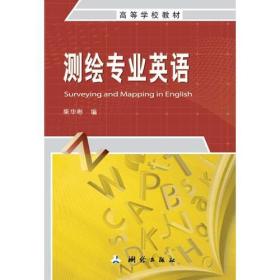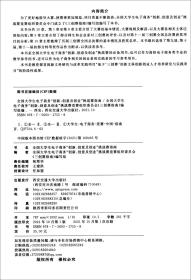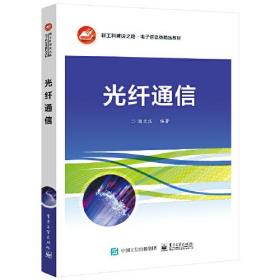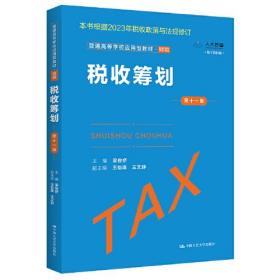
测绘专业英语
正版二手书,图片套装的图书是其中一本,购买前请联系客服
¥ 15.97 4.2折 ¥ 38 八五品
库存5件
山东济南
认证卖家担保交易快速发货售后保障
作者柴华彬 编
出版社测绘出版社
出版时间2015-09
版次1
装帧平装
货号9787503037320
上书时间2024-06-18
- 在售商品 暂无
- 平均发货时间 8小时
- 好评率 暂无
- 最新上架
商品详情
- 品相描述:八五品
图书标准信息
- 作者 柴华彬 编
- 出版社 测绘出版社
- 出版时间 2015-09
- 版次 1
- ISBN 9787503037320
- 定价 38.00元
- 装帧 平装
- 开本 16开
- 纸张 胶版纸
- 【作者简介】
-
柴华彬,男,1977年8月生,博士(后),河南理工副教授,研究生导师,河南省青年骨干教师。主要从事测绘、开采沉陷方面的教学与科研工作。为研究生和本科生讲授了《GIS原理与应用》、《地理信息技术》、《测绘专业英语》、《矿山测量学》等课程。
主持和参与省教育规划课题2项,省厅级教改课题2项。2011年获河南省教育科学研究优秀成果二等奖1项,发表教育教学研究论文7篇。2006年获得省级精品课程1门,2009年获得国家级精品课程1门。作为主要成员,2007年获得《测绘工程》教育部高等学校特色专业,2008年获得测绘工程河南省实验教学示范中心工作,2011年获得测绘工程省级教学团队。
主持和参与完成国家自然科学基金3项,省厅级项目9项,横向技术服务课题18项,获得河南省科技进步二等奖1项,教育部高校科技奖1项,中国煤炭工业协会科学技术二等奖2项,三等奖1项。发表学术论文70多篇,其中EI收录16篇,ISTP收录5篇。出版专著1部,规划教材5部。 - 【目录】
-
Chapter 1 Overviews
1.1 Introduction
1.2 Branches of surveying
1.2.1 Geodetic surveying
1.2.2 Plane surveying
1.2.3 Topographic surveying
1.2.4 Engineering surveying
1.2.5 Cadastral surveying
1.2.6 Hydrographic surveying
1.2.7 Mine surveying
1.3 Developments of surveying
1.3.1 Surveying techniques
1.3.2 Surveying equipments
1.3.3 Origin of Geomatics
1.4 Achievements of China's surveying
Chapter 2 Datums of Surveying
2.1 Introduction
2.2 Geoid and reference ellipsoid
2.2.1 Mean Sea Level and Geoid
2.2.2 Reference ellipsoid
2.3 Map projections
2.3.1 Three kinds of projections
2.3.2 Typical map projections
2.4 Datums and coordinate system
2.4.1 Horizontal and vertical datums
2.4.2 Coordinate systems
2.4.3 Coordinate conversions
Chapter 3 Distance Measurement
3.1 Introduction
3.2 Taping
3.3 Tacheometry
3.4 EDM measurement
Chapter 4 Elevation Measurement
4.1 Introduction
4.2 Leveling instruments
4.2.1 Ordinary level
4.2.2 Automatic level
4.2.3 Digital level
4.2.4 Laser level
4.3 Spirit leveling work
4.3.1 Principle of spirit leveling
4.3.2 Methods of spirit leveling
4.3.3 Refraction and curvature
4.4 Trigonometrie leveling
4.4.1 Instruments of trigonometric leveling
4.4.2 Principle of trigonometric leveling
4.4.3 Methods of trigonometric leveling
Chapter 5 Angle Measurement
5.1 Introduction
5.1.1 Horizontal angle
5.1.2 Vertical angle
5.2 Direetion and azimuth
5.2.1 Direction of line
5.2.2 Azimuth and bearing
5.3 Theodolite
5.3.1 Optical theodolite
5.3.2 Electronic theodolite
5.4 Angle measurement
5.4.1 Horizontal angle measurement
5.4.2 Vertical angle measurement
Chapter 6 Measurement Errors
6.1 Introduction
6.1.1 Sources of errors
6.1.2 Mistakes in measurements
6.2 Classifieations of errors
6.2.1 Systematic errors
6.2.2 Random errors
6.3 Analysis of random errors
6.3.1 Properties of random errors
6.3.2 Mean and standard deviation
6.3.3 Propagation of errors
6.4 Least—squares adjustment
6.4.1 Principles of adjustment
6.4.2 Models of adjustment
6.4.3 Adjustment methods
Chapter 7 Control Surveying
7.1 Control networks
7.1.1 Types of control networks
7.1.2 GPS control networks
7.1.3 Accuracy of control surveying
7.2 Triangulations and intersections
7.2.1 Triangulation methods
7.2.2 Intersection methods
7.3 Traversing
7.3.1 Classifications of traversing
7.3.2 Closures of traversing
7.3.3 Calculations of traversing
7.3.4 Traverse networks
7.4 Vertical control surveying
7.4.1 Differential leveling
7.4.2 Reciprocal leveling
7.4.3 Trigonometric leveling
Chapter 8 Engineering Surveying
8.1 New survey equipments
8.1.1 Total station
8.1.2 Laser rangefinder
8.1.33D laser scanner
8.1.4 Gyro—theodolite
8.2 Construction layout
8.2.1 Establishing control points
8.2.2 Construction layout
8.2.3 Techniques of layout
8.2.4 As—built surveys
8.3 Deformation monitoring
8.3.1 Deformation parameters
8.3.2 Monitoring schemes
8.3.3 Monitoring techniques
8.3.4 Reference network design
8.3.5 Monitoring data processing
8.4 Surface subsidence observation
8.4.1 Factors affecting surface subsidence
8.4.2 Subsidence observation lines
8.4.3 Frequency of subsidence surveys
8.4.4 Survey instruments and techniques
Chapter 9 Map and Cartography
9.1 Introduction
9.1.1 Map scale
9.1.2 Map elements
9.1.3 Map Types
9.2 Cartographic technology
9.2.1 Cartographic process
9.2.2 Map design
9.2.3 Computer—aided design
9.3 Developments of cartography
9.3.1 Technological advances
9.3.2 Cartographic software
9.3.3 Electronic maps
Chapter 10 Global Positioning System
10.1 Introduction
10.2 Basic principles of GPS
10.2.1 GPS positioning principle
10.2.2 GPS positioning methods
10.2.3 Error sources of GPS
10.3 Differential GPS
10.3.1 Differential principle
10.3.2 Differential processing
10.3.3 Accuracy of DGPS
10.4 RTK GPS technology
10.4.1 Basic principle of RTK
10.4.2 Cartier phase tracking
10.4.3 CORS Network of RTK
Chapter 11 Remote Sensing
11.1 Overviews
11.1.1 Concepts of RS
11.1.2 Types of RS platforms
11.1.3 Classifications of RS
11.1.4 Applications of RS
11.2 RS working principles
11.2.1 Electromagnetic energy
11.2.2 Interactions with the terrain
11.2.3 RS working process
11.3 Remote sensing data
11.3.1 Ground reference data
11.3.2 RS data acquisition
11.3.3 RS data formats
11.4 RS data processing
11.4.1 RS data interpretation
11.4.2 Digital RS image processing
11.4.3 Thematic Classification
11.4.4 RS data integrations
Chapter 12 Geographic Information System
12.1 Introduction
12.1.1 Components of GIS
12.1.2 Functions of GIS
12.1.3 Applications of GIS
12.2 Data structures
12.2.1 Raster Data Structures
12.2.2 Vector Data Structures
12.2.3 Comparisons of data structures
12.3 Data processing
12.3.1 Data input
12.3.2 Data preprocessing
12.3.3 Spatial analysis
12.4 Product generation
12.4.1 Map products
12.4.2 Image products
12.4.3 Statistical charts
12.4.4 Digital Terrain Model
References
Vocabulary
点击展开
点击收起
— 没有更多了 —












以下为对购买帮助不大的评价